- When the Yanomami Indigenous Territory, the world’s biggest, was designated 30 years ago, the Brazilian army cleared out the illegal gold miners operating there.
- Today, miners are back in force, encouraged by the anti-Indigenous and anti-environment rhetoric of President Jair Bolsonaro, who has vowed to open up the reserves to mining.
- The illegal activity has destroyed forests and contaminated rivers with mercury and has also brought with it violence, disease and death for the 27,000 Yanomami living in the heart of the Amazon.
- As it marks the 30th anniversary of its establishment, the Yanomami reserve faces of the prospect of losing up to a third of its area to mining — a very real prospect if a key Bolsonaro bill clears Congress.
Thirty years ago, Brazil issued a decree officially recognizing the ancestral land of the Yanomami people as an Indigenous territory. The new designation made the area, located deep in the Amazon, on the border with Venezuela, a protected land: it can’t be sold or exploited and may only serve as the source of livelihood for the 27,000 Indigenous Yanomami living in more than 350 villages spread across the rainforest.
Indigenous territories in Brazil have long been a stronghold against deforestation. But there was little to celebrate for the Yanomami on May 25, the 30th anniversary of their territory’s official recognition. That’s because this reserve, an area the size of former colonial power Portugal and located in the shadow of Pico da Neblina, Brazil’s highest mountain, has witnessed a massive invasion of illegal gold miners, known as garimpeiros, in recent years. The area inside the reserve that’s been destroyed by mining activities increased from 1,200 hectares (2,965 acres) at the end of 2018 to 3,272 hectares (8,085 acres) at the end of last year, according to the report “Yanomami Under Attack,” from the Instituto Socioambiental (ISA), an NGO that advocates for environmental diversity and the rights of Indigenous people.
The report describes how some 20,000 illegal miners have penetrated deep into the Yanomami reserve, which straddles the border region of the states of Roraima and Amazonas, by plane and boat. Their activities are described as “artisanal,” yet they work with excavators, bulldozers and dredgers that cost a small fortune. In the 1950s and 1960s, the romantic image of the lonely miner panning for gold along the river still had some truth; today, they work with balsas and dragas, flatboats that suck up the sand from the riverbed, pan for gold on board, and blast the waste back into the water, the report says.
Along the rivers, an informal economy has been established, the report says, replete with grocery stores, internet providers and sex workers, with the main currency being gold. Although it’s illegal for outsiders to even be inside an Indigenous reserve without a permit, let alone mine, the Brazilian army and police are nowhere to be seen, the ISA noted.
“History repeats itself,” said Christina Haverkamp, founder of the German NGO Hilfe Yanomami, by phone. She recently returned from a one-month stay in the Yanomami village of Papiu-Kayanaú, where she helped renovate a health clinic. “Some 30 years ago, the gold miners only brought misery. And today, they do exactly the same thing.”
In the 1980s, the Yanomami reserve suffered from the first wave of invasions by gold miners. At the time, some 40,000 garimpeiros entered the area. And with them came violence, disease and alcohol. It’s estimated that one-fifth of the Yanomami population died in seven years.
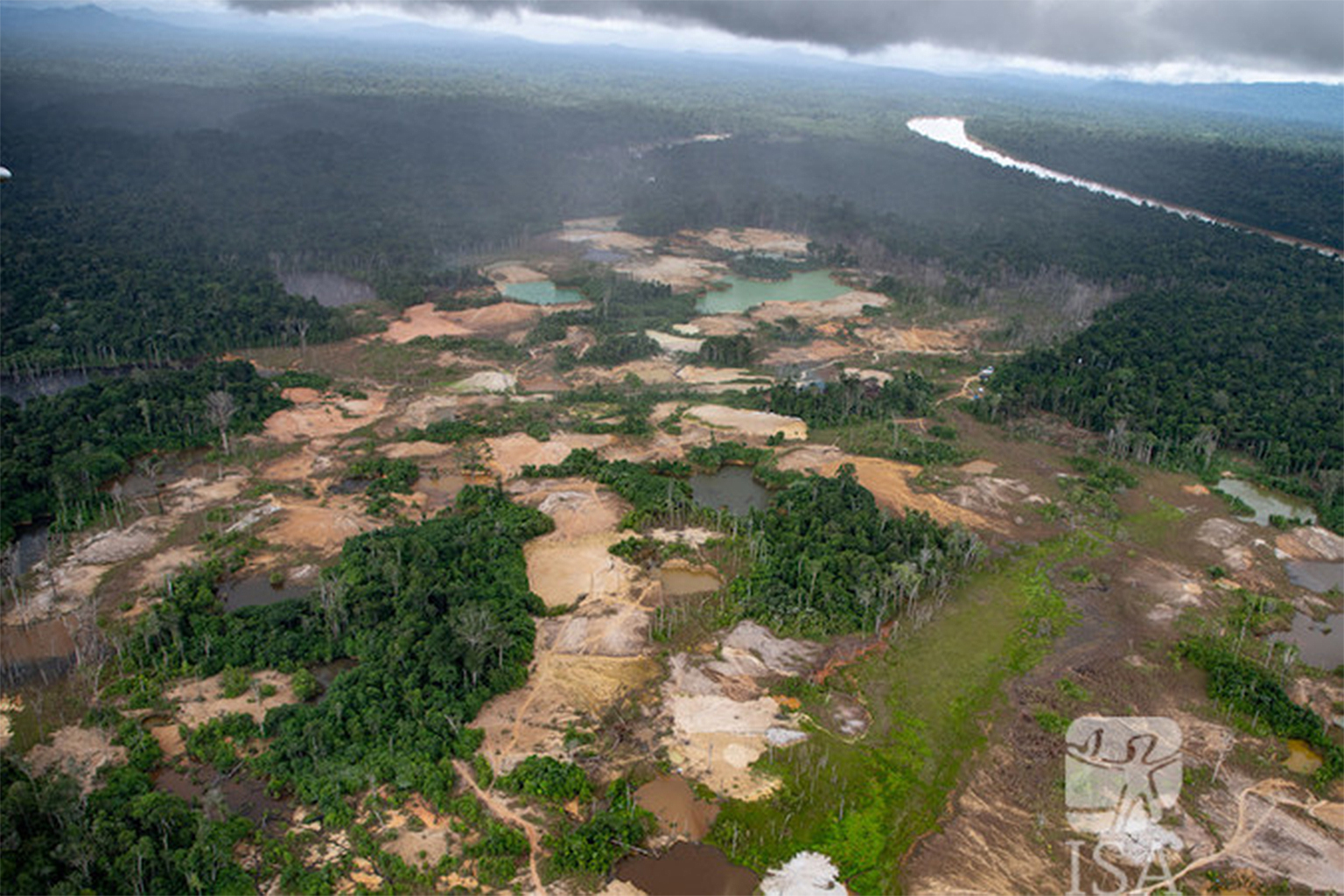
Aided by the world-famous images of renowned Brazilian photographer Claudia Andujar, an international movement to protect the Yanomami gathered pace. Haverkamp was part of that movement. She and a friend crossed the Atlantic Ocean on a bamboo raft with an eye on the 1992 Earth Summit in Rio de Janeiro. On their sail, they’d written: “500 years of America, 500 years of genocide. Land rights for all Indians North and South. Save the Yanomami and the rainforests. Immediately.”
“It got a lot of media attention at the time, so in that sense, it was a success,” Haverkamp said. “But I would not do it again. When we later crossed the Caribbean Sea to reach the U.S., we only just escaped Hurricane Andrew.”
Yellow rivers
Ever since that journey, Haverkamp said she has visited Brazil and the Yanomami reserve annually. In 1997, she built a health clinic in the village of Ixima, followed in 2002 by another one in Papiu-Kayanaú and a third in Mavaquita, in the Venezuelan Amazon, in 2005. This year, she said, she returned to Papiu-Kayanaú accompanied by two carpenters and a woodworker for a complete renovation of the clinic there; five Yanomami residents helped them.
Getting to Papiu-Kayanaú takes a 1.5-hour flight by bush plane from Boa Vista, the capital of Roraima state, Haverkamp said. “From the plane, you see everywhere the yellowish, muddy rivers, the scarred lands and the blue plastic rooftops of the makeshift miner towns.”
Haverkamp said the Hilfe Yanomami clinic, a two-story structure made entirely of wood, is close to the village’s landing strip. Following 20 years of heavy rain, she said, a lot of it had rotted. But the repairs went smoothly, and most of the work was completed in about two weeks, according to her.
“Near our clinic was a mining operation,” she said. “We would hear the balsas day and night. The miners work in shifts nonstop.” She said many of them visited the clinic to be treated for malaria. “At first, I wasn’t happy with that, but our doctor said he cannot refuse patients.”
In their quest for gold, the miners leave behind numerous ponds of stagnant water, which are ideal breeding grounds for mosquitos. As a result, malaria in the region has increased sharply. In May last year, a photo of a severely emaciated 8-year-old Yanomami girl hit the headlines. She was lying in a hammock, appearing more dead than alive. Suffering from malaria, she weighed just 8 kilograms (18 pounds).
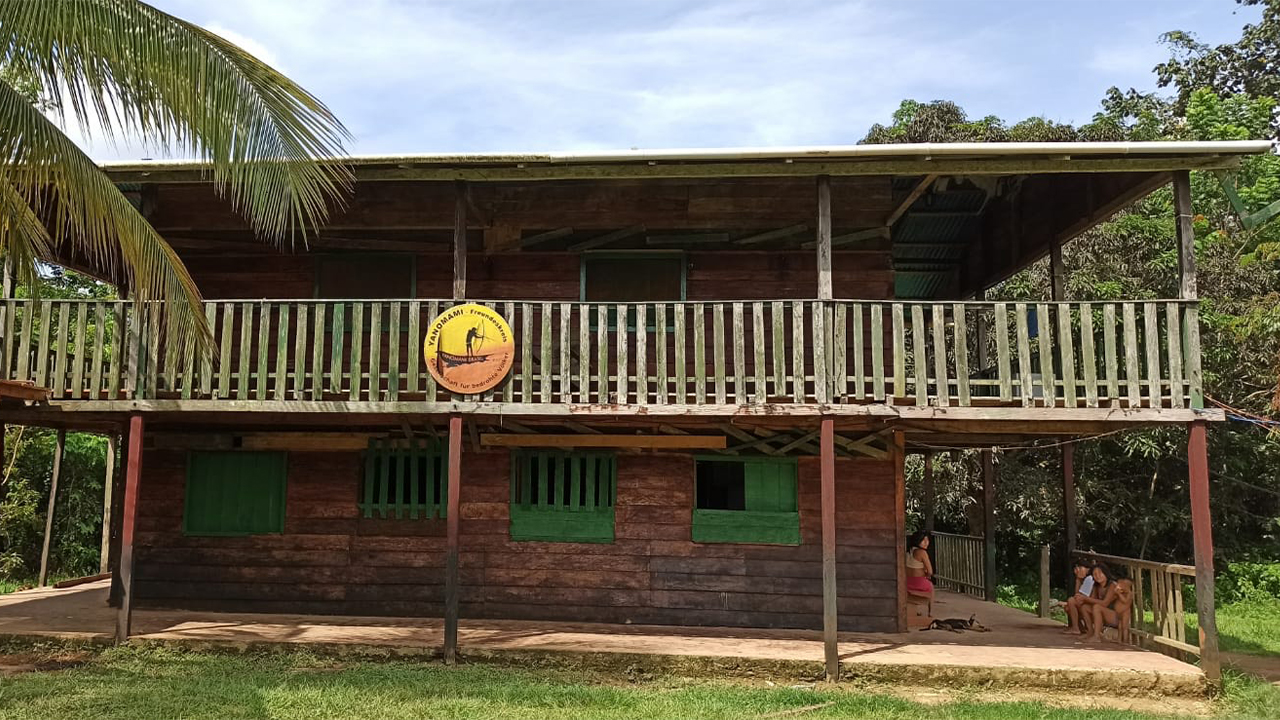
Silent killer
Then there’s the mercury. Used by the miners to separate the gold from the ore, mercury is a silent killer. It latches onto the gold, and is then burned off, evaporating into the air before descending again to settle on plants or sink in water. Fish consume this mercury-tainted material, and from there, the element works its way up the food chain.
“Twenty years ago, we would drink water from the river, but today everything is polluted with mercury,” Haverkamp said. “So, we had to fly in our own water and build a special structure on the clinic’s roof to collect rainwater and store it in tanks.”
The Oswaldo Cruz Foundation, Brazil’s leading public health research institute, carried out research in 2016 that showed that 92% of Yanomami individuals tested had higher levels of mercury in their blood than deemed safe by the World Health Organization (WHO). High exposure to mercury can lead to severe neurological abnormalities.
It’s not just the Indigenous communities who are affected. A 2020 survey showed that all the fish sampled in the northwestern state of Amapá contained mercury, nearly a third of them at levels higher than the WHO safe limit. The study was conducted by researchers from the Oswaldo Cruz Foundation, WWF-Brazil, the Amapá State Institute of Scientific and Technological Research, and the Indigenous Research and Training Institute (Iepé).
According to Haverkamp, most Yanomami in Papiu-Kayanaú have stopped eating fish. “No one knows exactly how big the problem is,” she said. Joênia Wapichana, the first Indigenous woman elected to Brazil’s lower house of Congress and a Roraima native, has been trying to get an independent investigation off the ground, but local authorities and politicians have worked against her, Haverkamp said. “It seems the world is not supposed to know how bad the situation is.”
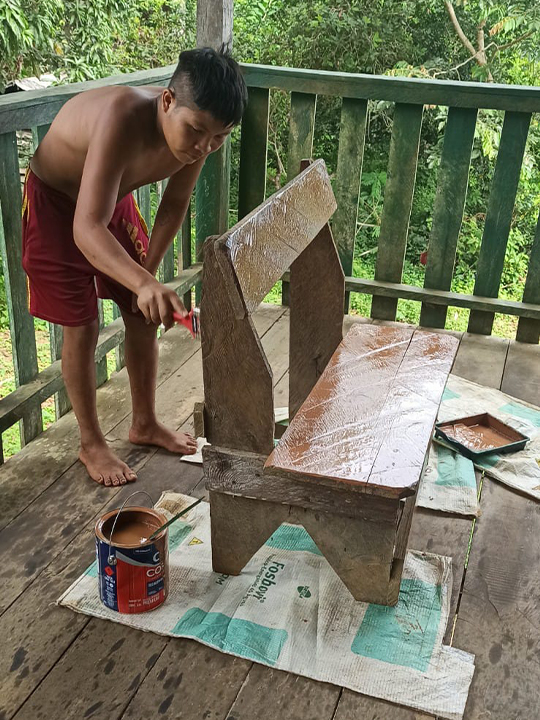
In Boa Vista, the state capital, the main monument is that of an enormous garimpeiro panning for gold. The city is also home to dozens of shops buying and selling gold. Roraima’s governor, Antonio Denarium, is a close ally of President Jair Bolsonaro; both are staunchly pro-mining.
In February 2021, the Roraima state legislature passed a law that allowed “artisanal mining,” including the use of mercury, to take place anywhere in the state except in protected areas. Six months later, however, Brazil’s Supreme Federal Court deemed the law a violation of the Constitution, citing endangerment of public health.
Escalating artisanal mining
The illegal gold mining taking place in the Yanomami reserve isn’t an isolated affair. According to MapBiomas, a multidisciplinary network visualizing land use in Brazil through satellite imagery, mining has increased sharply in the country’s Amazonian region in recent decades: covering a total area of 31,000 hectares (76,600 acres) in 1985, by 2020 it had spread to 206,000 hectares (509,000 acres). Since 2018, artisanal mining has been a bigger activity than industrial mining, reaching 107,800 hectares (266,000 acres) in 2020 — 94% of which took place in the Amazon. Industrial mining covered 98,300 hectares (242,904 acres).
With 110,209 hectares (272,332 acres), the state of Pará is Brazil’s number one mining state. Two-thirds of the activity there is artisanal, concentrated in the region between the municipalities of Itaituba and Jacareacanga on the Tapajós River. Like Boa Vista, Itaituba features a prominent statue of a bent-over miner and is home to dozens of shops buying and selling gold.
Several police investigations into gold mining in the Yanomami reserve have identified a similar pattern. Criminal organizations that mine the gold can sell it in it in neighboring countries or in the gold and jewelry shops of Boa Vista. But, for “fresh gold” to become “legal gold,” it must travel further: to Itaituba in Pará, or Manaus in Amazonas state, according to the investigations.
Because gold is a financial commodity, the Central Bank of Brazil regulates who can buy it from mines. Known locally as Distribuidora de Títulos e Valores Mobiliários, or DTVMs, there are eight of these authorized companies, and together they run a network of 93 gold-buying stations in seven Brazilian states, called Postos de Compra de Ouro (PCOs). There are no PCOs in Roraima; by contrast, a quarter of all PCOs are located in Itaituba.
When buying gold, a PCO is supposed to check where it came from and whether it was obtained with a proper permit issued by the national mining agency, the ANM. Because the Yanomami reserve is protected by law, gold mined there is by definition illegal. But it’s easy to transform this illegal gold into a legal commodity, according to a recent report by the Escolhas Institute, an organization that advocates for sustainable development of natural resources.
It shows that Brazil’s gold production increased more than fivefold between 2015 and 2020: from 79 to 488 metric tons, said Larissa Rodrigues, portfolio manager at the Escolhas Institute, by video call. “At least 229 tons showed ‘signs of illegality,’ which is the term we use to avoid getting into legal trouble. Gold is a sensitive subject in Brazil,” she added.
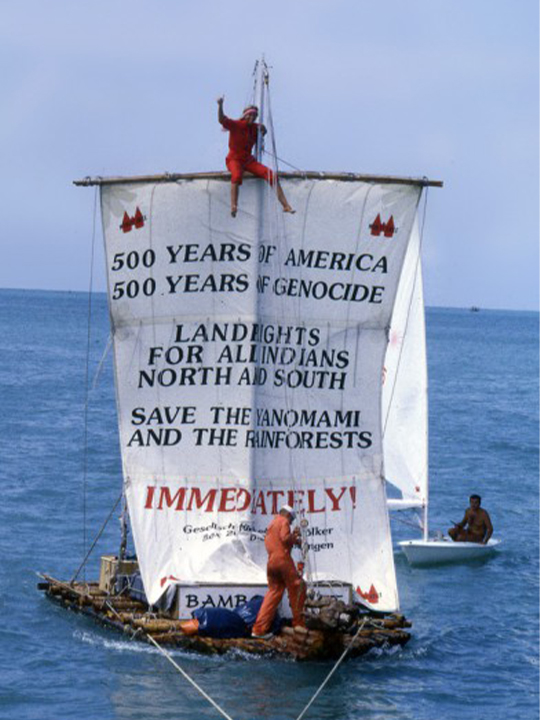
The Escolhas Institute compared data and documents issued by the ANM with satellite images from MapBiomas. From this, it was able to conclude that 40% of these 229 tons of gold with “signs of illegality” came from areas with a valid mining permit but which hadn’t seen any mining activity in years.
“This is the number one category in the Brazilian gold-laundering scenario,” said Rodrigues, who previously worked as head researcher at Greenpeace Brazil. “In other words, the gold is obtained in area A, for which there is no permit and which can be Indigenous land. But on paper, it stems from area B, for which there is a permit” — a simple case of making a false claim about the origin of the gold. She added that about 25% of the 229 tons didn’t have any documents indicating the gold’s provenance, despite this information being required by law.
“All a gold miner has to do at a PCO is fill in a form with his personal data, permit number and the quantity of gold he found,” Rodrigues said. Most PCOs have a list of permit numbers, and if a seller doesn’t have one, they can just pick one from the list, she said. “Everything is done with pen and paper. I don’t know about the rest of the world, but I cannot imagine it is as lax as here in Brazil.”
The Bolsonaro effect
The sharp increase in illegal gold mining in the Amazon is closely linked to the rise of President Jair Bolsonaro, who took office at the start of 2019. Bolsonaro, who is running for a second term in October’s elections and whose own father was reportedly a garimpeiro, has since the previous election consistently vowed to make life easier for gold miners. During campaigning in 2018, he promised to simplify procedures and enable mining even in protected areas.
Following his inauguration in January 2019, he started by cutting funding and curtailing the powers of the federal agencies responsible for environmental protection and for Indigenous affairs. This is also arguably why the Brazilian military and police have hardly acted to stop the invasion of the Yanomami reserve by some 20,000 miners, activists say, even though their presence is blatantly illegal. The response today is in stark contrast to the scenario that unfolded in 1992 when the territory was designated a protected area, and the Brazilian army moved in to clear out virtually every miner from the Yanomami lands.
In 2020, Bolsonaro stepped up his pro-mining efforts by submitting a bill to Congress that would open up Indigenous lands to not just mining — currently prohibited under the country’s Constitution — but also to hydroelectrical projects and oil and gas exploration. On Feb. 14 this year, he issued a decree promoting “artisanal gold mining” with an eye on “sustainability” while calling on the ANM to simplify the licensing process.
“What we see is a continuation of the ‘development’ model based on a culture of ‘illegality,’ in which good citizens are called as such because they move the economy by cutting trees and dumping mercury, while those exposing illegality are being punished,” said by phone Caetano Scannavino, coordinator at the NGO Saúde e Alegria (“Health and Joy”) in Santarém municipality, Pará state.
“The Tapajós region has one of the richest gold soils in the world,” Scannavino added. “Had there been a proper development model, cities like Itaituba and Jacareacanga today would have first-class hospitals, internet and sewerage systems. But of the 5,500 Brazilian municipalities, Jacareacanga still ranks among the poorest.”
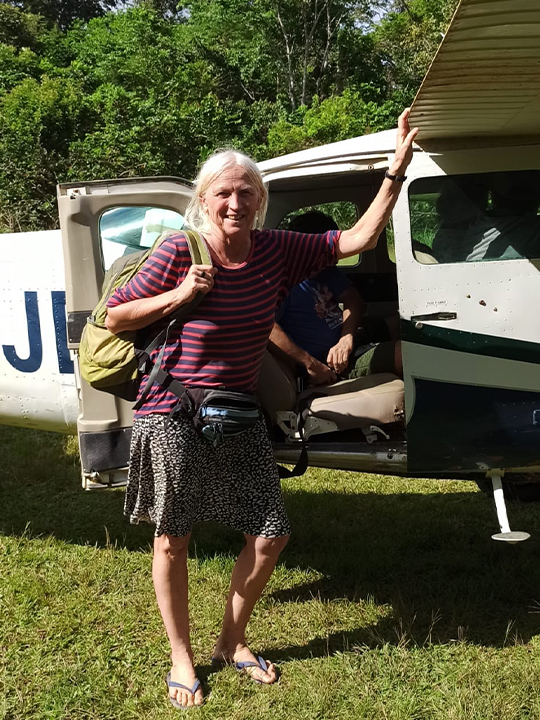
The Bolsonaro administration has consistently promoted the image of a garimpeiro as a poor individual panning for gold in search of a better future. And while that image isn’t necessarily untrue, it ignores the other part of the picture: the donos, the owners of the mining enterprises, who often invest millions of reais to assemble teams of miners, charter bush planes and buy excavators, bulldozers and dredgers.
“I talked a lot with the gold miners in Papiu-Kayanaú,” Haverkamp said. “They know me as ‘the lady of the clinic.’ They were generally quite friendly and let me use the internet. Meanwhile, they just want to find that one big stone that will make them rich, but most only make just enough to survive. The ones getting rich are the donos. They know what they do is illegal but hope Bolsonaro will make it legal.”
There’s much resistance to Bolsonaro’s plans, including the mining bill now being deliberated in Congress. But even without that law on the books, interest in carving up Indigenous lands for gold has never been higher: in the first half of 2021, the national mining agency received some 1,300 mining applications, 500 of them for land inside the Yanomami reserve. If all these applications were to be approved, Brazil’s largest and oldest Indigenous reserve would lose a third of its area to mining.
Banner image: Christina Haverkamp (center), founder of the German NGO Hilfe Yanomami, with Indigenous children. The activist has been going to Brazil since the 1990s and says wildcat miners are disrupting the life of the Yanomami people. Image courtesy of Hilfe Yanomami.
FEEDBACK: Use this form to send a message to the author of this post. If you want to post a public comment, you can do that at the bottom of the page.
